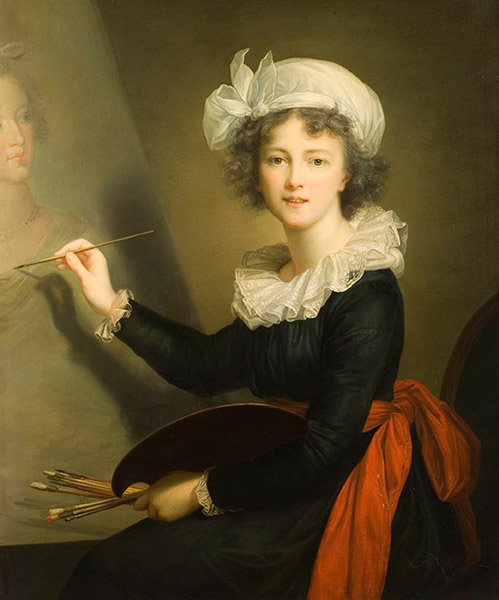There is always something engaging, mysterious, and captivating when gazing into the eyes of an artist through a self-portrait. Self-images are intimate and often leave the viewer with a sense that we are somehow closer to their makers. One of history’s greatest self-portraits has evoked similar feelings for centuries and is on view now during a first ever retrospective.
Élisabeth Louise Vigée Le Brun (1755-1842) is considered by many to have been one of history’s most successful women painters, especially with regard to the turbulent times in which she worked. Spanning the reign of Louis XV to that of Louis-Philippe, Vigée Le Brun witnessed first-hand the violence and chaos of the French Revolution.
.jpg)
Élisabeth Louise Vigée Le Brun, “Self-Portrait with Daughter Julie,” 1786, oil on panel, 106 x 84 cm.
(c) Musée du Louvre, Paris 2015
A woman of high social status, Vigée Le Brun produced a wealth of self-portraiture that not only revealed that status, but served to showcase the professional she had become in the face of gender inequality in the arts — a masterful portraitist and painter. A number of Vigée Le Brun works will feature during the artist’s first ever retrospective at the Grand Palais in Paris.

Élisabeth Louise Vigée Le Brun, “Marie-Antoinette with Children,” 1787, oil on canvas, 76.8 x 106.7 cm.
(c) Google Cultural Institute 2015
Via the exhibition webpage, “Vigée Le Brun used self-portraits to assert her status, circulate her image, and show people the mother she had become despite the constraints of a career. In this respect, she made her greatest coup de force at the 1787 Exhibition, where she presented two paintings that cannot be dissociated. First, a portrait of Queen Marie-Antoinette posing for a portrait surrounded by her children in an attempt to rectify the image of an extravagant libertine; secondly, the portrait of a female artist hugging her daughter Julie to her chest in an effusive Raphael-like manner. The latter is one of the finest and most popular of the many works by this painter owned by the Louvre and has remained the emblem of maternal tenderness since it was first exhibited to the public. The culture of the Enlightenment and the influence of Rousseau obliged the artist to take on this role, which she did happily and with resounding success. As a counterpoint, she painted the ‘Portrait of Hubert Robert.’ These paintings are absolute icons illustrating the joy of life and creative genius, complementing and communicating with each other.”
“Élisabeth Louise Vigée Le Brun” opened on September 23 and will be on view through January 11.
To learn more, visit the Grand Palais.
This article was featured in Fine Art Today, a weekly e-newsletter from Fine Art Connoisseur magazine. To start receiving Fine Art Today for free, click here.








